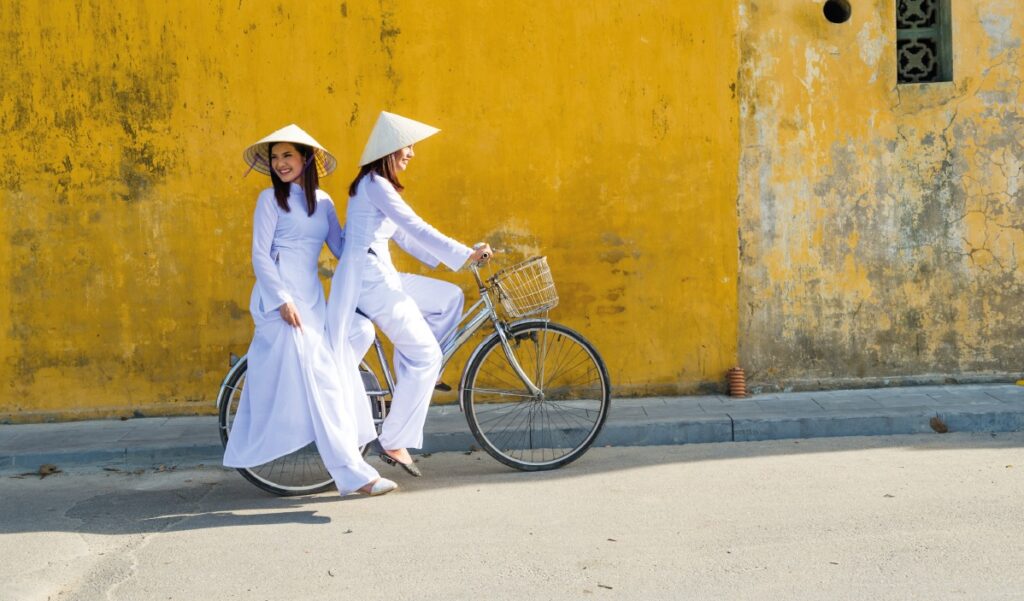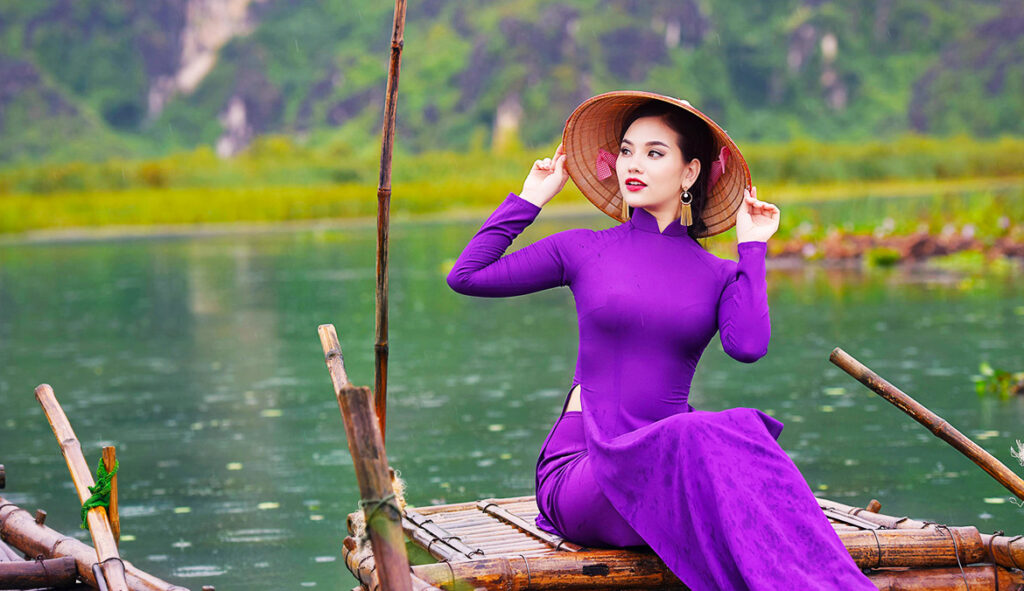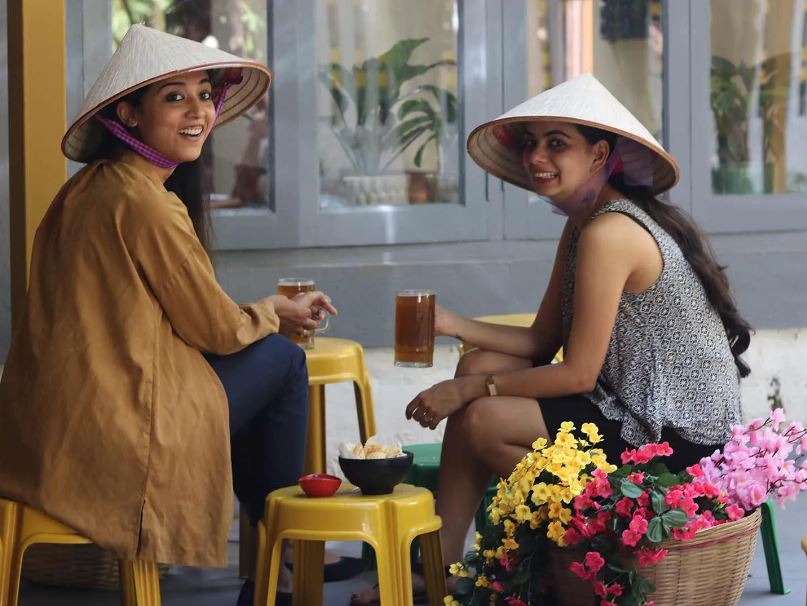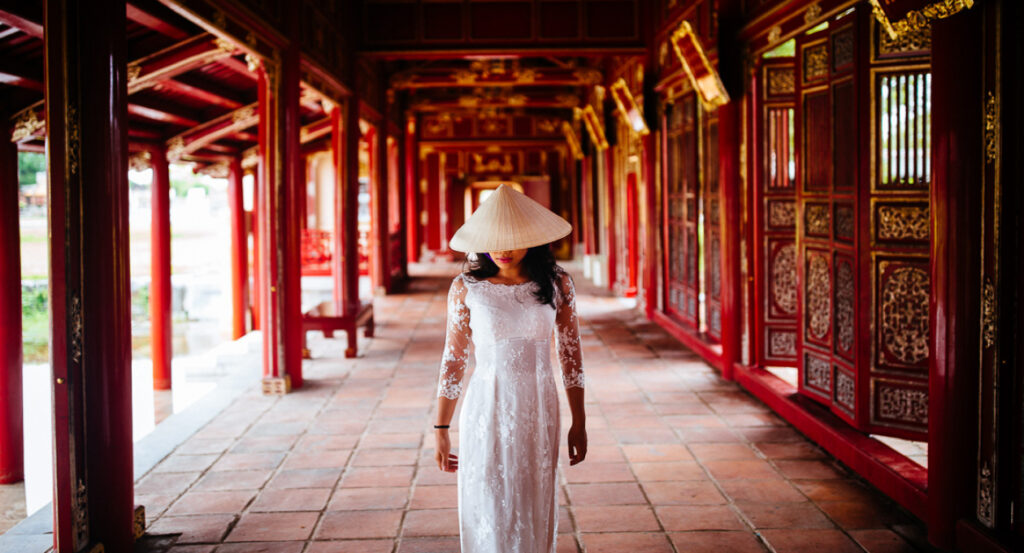Vietnam, with its rich cultural heritage and diverse traditions, is home to a unique fashion scene that reflects its historical influences and climate. This article explores the clothing choices of girls in Vietnam, from traditional garments to everyday attire in urban areas and rural fashion. Additionally, we will delve into special occasion outfits worn during weddings, festivals, and holidays.
Understanding Vietnam’s Cultural Context
Vietnamese fashion is deeply intertwined with the country’s cultural context. The influence of vietnam nightlife 베트남 유흥, history and the role of climate play significant roles in shaping clothing choices.
When exploring the fashion scene in Vietnam, it is impossible to ignore the profound influence of history. Throughout the centuries, Vietnam has been shaped by various dynasties and neighboring cultures, resulting in a unique blend of traditional and contemporary fashion. The clothing styles not only reflect the country’s cultural identity but also serve as a visual representation of its rich heritage.
Traditional Vietnamese clothing, such as the iconic Ao Dai, is a prime example of the fusion between history and fashion. The Ao Dai, a long, elegant tunic worn over wide-legged pants, traces its roots back to the 18th century. Originally worn by both men and women, it evolved over time to become a symbol of femininity and grace for Vietnamese women. The intricate designs and vibrant colors of the Ao Dai showcase the craftsmanship and attention to detail that have been passed down through generations.

The Influence of History on Vietnamese Fashion
Throughout history, Vietnam has experienced a series of cultural exchanges and invasions, each leaving its mark on the country’s fashion landscape. The Chinese domination during the first millennium brought with it influences from traditional Chinese attire, such as the high-collared tunics and loose-fitting trousers. This fusion of styles created a unique Vietnamese fashion aesthetic that continues to evolve to this day.
During the French colonial period in the 19th and early 20th centuries, Western fashion began to seep into Vietnamese society. The French introduced tailored suits, corsets, and high-heeled shoes, which gradually integrated into Vietnamese fashion, blending with traditional elements to create a distinct style. This blend of Eastern and Western influences can still be seen in modern Vietnamese fashion, where traditional garments are often paired with contemporary accessories and designs.
See also: Skillful Carpentry Techniques of Vietnamese Carpenters
The Role of Climate in Clothing Choices
Vietnam’s tropical climate, with its hot and humid weather, has a profound impact on the clothing choices of its people. The need for comfort and practicality is paramount, leading to the preference for lightweight and breathable fabrics. Natural materials such as silk, cotton, and linen are popular choices, allowing the skin to breathe and providing relief from the sweltering heat.
Protection from the sun is also a crucial consideration in Vietnam’s climate. Wide-brimmed hats, known as non la, are a common sight, providing shade and shielding the face from the scorching sun. In coastal regions, where the sun’s rays are particularly intense, lightweight long-sleeved shirts and pants made from UV-protective fabrics are favored.
Moreover, the climate also influences the color palette of Vietnamese fashion. Light and pastel shades are prevalent, as they reflect sunlight and help to keep the body cool. Vibrant colors, such as shades of red and yellow, are also popular, representing luck and prosperity in Vietnamese culture.
Traditional Vietnamese Clothing for Girls
One iconic traditional garment worn by girls in Vietnam is the Ao Dai, which is the country’s national dress.
The Ao Dai, a form-fitting tunic worn over wide-legged pants, is considered a symbol of elegance and grace. It is often seen on special occasions such as weddings and traditional festivals. The Ao Dai comes in various colors and patterns, reflecting individual preferences and regional traditions.
When it comes to the Ao Dai, the craftsmanship and attention to detail are truly remarkable. Skilled artisans spend hours meticulously embroidering intricate patterns onto the fabric, using vibrant threads that create a mesmerizing effect. These patterns often depict scenes from nature, mythical creatures, or symbolic motifs that hold cultural significance.
The Ao Dai is not only a beautiful piece of clothing but also a reflection of Vietnamese history and culture. Its origins can be traced back to the 18th century, during the Nguyen Dynasty. Over the years, the design has evolved, incorporating influences from various dynasties and neighboring countries.
The Ao Dai: Vietnam’s National Dress
The Ao Dai holds a special place in Vietnamese society, symbolizing the virtues of modesty, femininity, and grace. It is not just a dress; it is an expression of cultural identity and pride. Young girls are often taught how to wear and appreciate the Ao Dai from a young age, passing down the tradition from one generation to the next.
One interesting aspect of the Ao Dai is that it can be customized to suit individual preferences and body types. Tailors take precise measurements and carefully craft each piece to ensure a perfect fit. This attention to detail ensures that every girl who wears an Ao Dai feels confident and beautiful.
The Non La: A Symbolic Hat
Another important element of traditional Vietnamese attire is the Non La, a cone-shaped hat made from palm leaves. The Non La is not only practical for protecting against the sun and rain but is also culturally significant, representing the beauty and resilience of Vietnamese women.
The craftsmanship involved in making a Non La is truly remarkable. Skilled artisans carefully select and shape palm leaves, weaving them together to create a sturdy yet flexible hat. The process requires patience and precision, as each hat is meticulously crafted by hand.
Non La hats come in various designs and styles, depending on the region of Vietnam. In the northern part of the country, the hats are often plain and simple, while in the southern region, they are adorned with intricate patterns and vibrant colors.
Wearing a Non La is not just a fashion statement; it is a way for Vietnamese women to connect with their roots and embrace their cultural heritage. The hat provides shade from the scorching sun, allowing women to work in the fields or go about their daily activities comfortably.
When a girl wears an Ao Dai and a Non La together, she embodies the essence of traditional Vietnamese beauty and grace. These two iconic pieces of clothing, with their rich history and cultural significance, continue to be cherished and celebrated in modern Vietnam.

Everyday Clothing in Urban Areas
In urban areas of Vietnam, modern fashion trends have influenced the clothing choices of girls. The vibrant streets of cities like Ho Chi Minh City and Hanoi are filled with a diverse array of fashion styles, reflecting the fusion of traditional Vietnamese attire and Western influences.
Walking through the bustling streets, one can’t help but notice the captivating mix of colors, fabrics, and patterns that adorn the fashion-forward girls of Vietnam. The fashion scene in urban areas has undergone a significant transformation in recent years, thanks to the increasing globalization and the rise of social media.
Western Influence on Vietnamese Fashion
With globalization and the rise of social media, Western fashion trends have made their way into Vietnamese cities. Many young girls can be seen wearing jeans, skirts, t-shirts, and dresses, infused with a mix of Vietnamese and Western styles. This blending of cultures has created a unique fashion statement that showcases the Vietnamese youth’s desire to embrace both their heritage and the modern world.
As the influence of Western fashion continues to grow, Vietnamese girls are not only exploring new styles but also redefining traditional clothing. The traditional Ao Dai, a long tunic worn over pants, has been given a modern twist with vibrant prints and contemporary designs, making it a popular choice among young girls who want to embrace their cultural roots while staying in tune with the latest trends.
Popular Clothing Brands in Vietnam
The popularity of international clothing brands has also grown in Vietnam’s urban areas. Many girls opt for trendy garments from well-known brands, both local and international, which offer a blend of modernity and individuality. From high-end luxury brands to streetwear labels, the fashion-conscious girls of Vietnam have a wide range of options to express their personal style.
Local Vietnamese designers have also gained recognition for their innovative creations, blending traditional elements with contemporary designs. These designers draw inspiration from Vietnamese culture, incorporating intricate embroidery, traditional patterns, and indigenous textiles into their collections. By supporting local designers, Vietnamese girls not only contribute to the growth of the country’s fashion industry but also showcase their pride in their cultural heritage.
The fashion landscape in urban areas of Vietnam is constantly evolving, shaped by a mix of global influences and local creativity. Whether it’s the fusion of Vietnamese and Western styles or the rise of local designers, the clothing choices of girls in urban areas reflect their desire to embrace modernity while staying connected to their roots.
Clothing in Rural Vietnam
Moving away from the bustling cities, fashion in rural Vietnam takes on a more practical and traditional approach. The clothing choices of girls in rural areas are not only influenced by fashion trends, but also by the demands of their daily lives.
The Importance of Practicality and Comfort
In rural areas, where agriculture is prominent, girls prioritize practicality and comfort in their clothing choices. They understand the importance of wearing garments that allow them to move freely and comfortably, as they engage in various tasks such as tending to crops, herding animals, and participating in household chores. Lightweight, loose-fitting garments made from breathable materials are favored to facilitate movement and withstand the demands of manual labor.
Moreover, the climate in rural Vietnam can be quite challenging, with hot and humid summers and cooler winters. Therefore, girls opt for clothing that can help them stay cool during the scorching heat and warm during the colder months. They often choose natural fabrics like cotton and silk, which not only provide comfort but also allow their skin to breathe.

Differences Between Urban and Rural Fashion
Rural fashion often embraces simplicity and traditional designs, showcasing the cultural heritage of Vietnam. The clothing styles of rural girls differ significantly from those of their urban counterparts. While urban fashion may be influenced by global trends and modern styles, rural girls take pride in preserving their traditional clothing customs.
Hand-woven fabrics, natural dyes, and embroidery are common in rural girls’ clothing, giving it a unique charm. These traditional techniques have been passed down through generations, and each piece of clothing tells a story of the rich cultural history of Vietnam. The intricate embroidery patterns often depict scenes from nature, such as flowers, birds, or landscapes, reflecting the close connection rural communities have with their natural surroundings.
Furthermore, rural girls often wear accessories that are not only aesthetically pleasing but also serve practical purposes. For example, they may wear wide-brimmed hats to protect themselves from the harsh sun or carry baskets woven from bamboo or rattan to collect fruits and vegetables from the fields.
In conclusion, the fashion choices of girls in rural Vietnam go beyond mere aesthetics. They are a reflection of their way of life, their connection to the land, and their cultural heritage. The practicality, comfort, and traditional elements embedded in their clothing choices make rural fashion in Vietnam truly unique and captivating.
Special Occasion Attire in Vietnam
Special occasions in Vietnam call for distinctive attires. Weddings, festivals, and holidays present opportunities to showcase the country’s vibrant fashion culture.
Wedding Attire for Girls in Vietnam
Weddings are grand affairs in Vietnam, and girls dress in elegant and elaborate outfits. Traditionally, girls wear the Ao Dai in vibrant colors and intricate designs, representing joy and prosperity.
Festival and Holiday Clothing
During festivals and holidays, girls often wear Ao Dai or traditional costumes tailored specifically for these celebrations. The garments are adorned with vibrant colors and intricate embroidery, adding to the festive atmosphere and capturing the essence of Vietnamese culture.
As we journey through the various aspects of clothing choices for girls in Vietnam, it becomes clear that fashion in this vibrant country is a blend of tradition, practicality, and contemporary trends. Whether it is the iconic Ao Dai, the simplicity of rural attire, or the influence of Western fashion, Vietnamese girls embrace their unique cultural heritage while embracing the ever-changing world of fashion.

